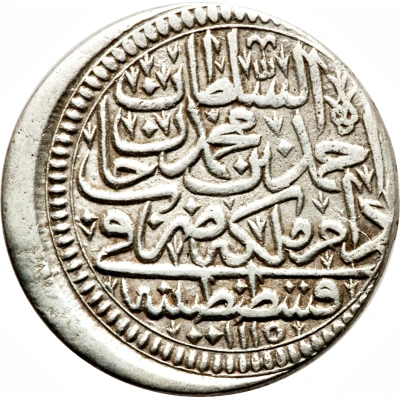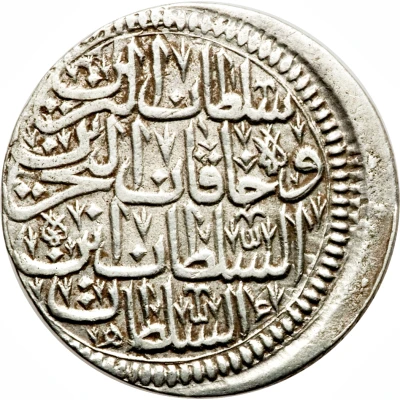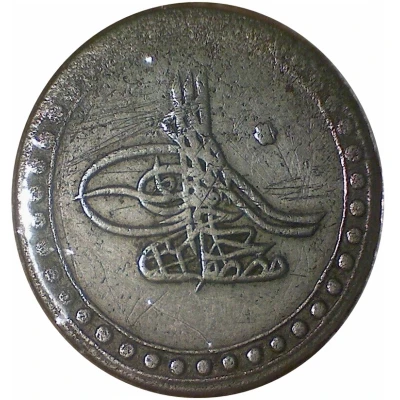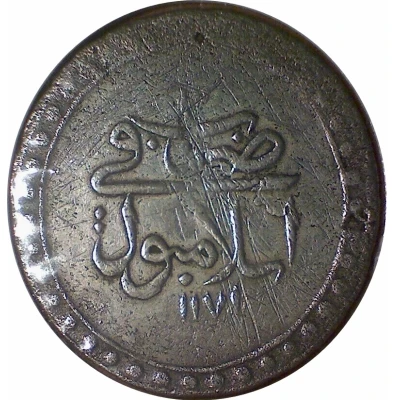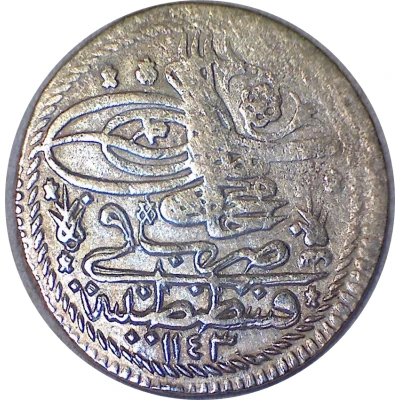
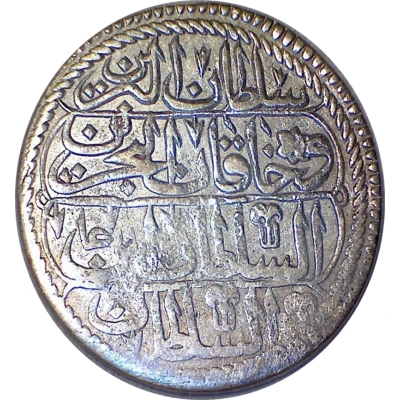

© jones
Yirmilik - Mahmud I Kostantiniyye
1143 (1731) year| Billon (.465 silver) | 12.4 g | 32 mm |
| Issuer | Ottoman Empire |
|---|---|
| Sultan | Mahmud I the Hunchback (1730-1754) |
| Type | Standard circulation coin |
| Year | 1143 (1731) |
| Calendar | Islamic (Hijri) |
| Value | ½ Kuruș |
| Currency | Kuruş (1688-1844) |
| Composition | Billon (.465 silver) |
| Weight | 12.4 g |
| Diameter | 32 mm |
| Thickness | 2 mm |
| Shape | Round |
| Orientation | Medal alignment ↑↑ |
| Demonetized | Yes |
| Updated | 2024-10-07 |
| Numista | N#49039 |
|---|---|
| Rarity index | 80% |
Reverse
Sultan ul berreyn
ve hakan ul bahreyn
es sultan ibn
es sultan
Script: Arabic
Interesting fact
One interesting fact about the Yirmilik - Mahmud I (Kostantiniyye) 1143 (1731) coin from the Ottoman Empire is that it was issued during a time of significant economic and political change in the empire. The coin was minted in 1731, which was just a few years after the Ottoman Empire had experienced a major economic crisis, known as the "Great Inflation," which had led to a significant devaluation of the empire's currency. In response to this crisis, the government had implemented a number of economic reforms, including the introduction of a new currency, the "yirmilik," which was issued in 1730 and was intended to stabilize the economy. The Yirmilik - Mahmud I (Kostantiniyye) 1143 (1731) coin was one of the first coins to be issued in this new currency, and it features a unique blend of silver and other metals, known as "billon," which was used to reduce the cost of production while still maintaining the coin's value. Despite these efforts, the coin's value would fluctuate over time, and it would ultimately be replaced by other currencies as the Ottoman Empire continued to evolve and change.
